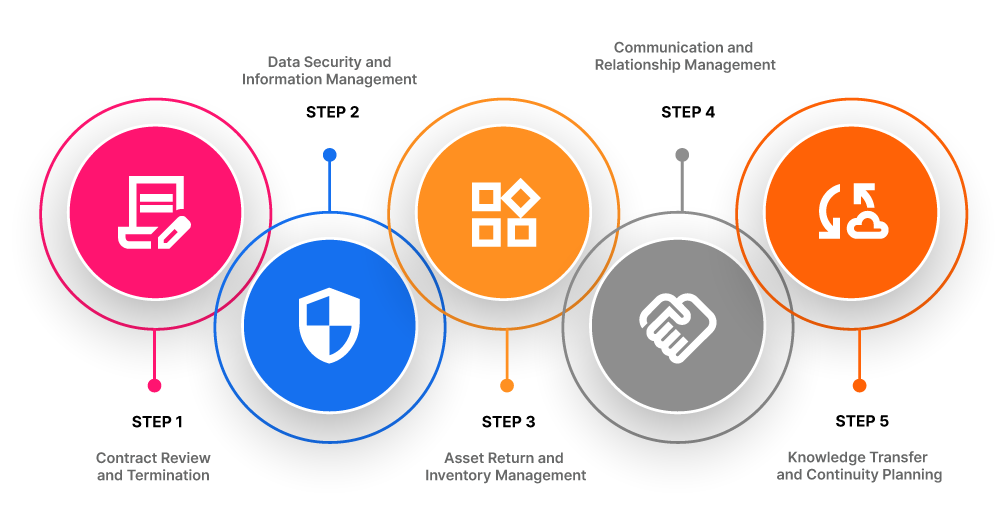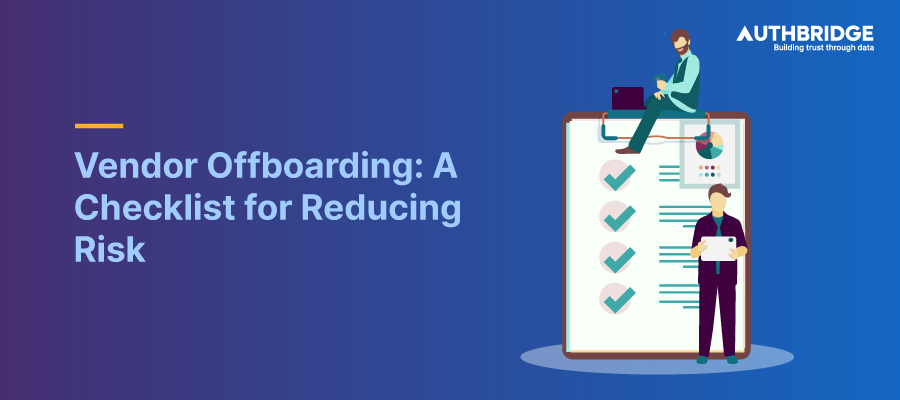Introduction
The decision to offboard a vendor can arise due to various reasons, such as contract expiration, performance concerns, or a shift in business needs. Regardless of the reason, a well-structured vendor offboarding process is crucial to minimize disruption, mitigate risks, and ensure a smooth transition. This comprehensive guide provides a detailed checklist for effective vendor offboarding, empowering businesses to navigate this process with confidence.
Understanding the Importance of Streamlined Vendor Offboarding
Saying goodbye to vendors shouldn’t be a headache. Streamlined vendor offboarding protects your business from data breaches, operational disruptions, and unexpected financial losses. Following a clear process ensures you meet contractual obligations, securely handle sensitive data, and minimize knowledge gaps during the transition. This ultimately fosters a healthy vendor ecosystem and optimizes your supply chain operations.
Potential Risks of Poor Vendor Offboarding:
- Data Security Breaches: Incomplete data deletion or inadequate security measures during offboarding can expose sensitive company information.
- Disruptions to Operations: A poorly managed offboarding process can lead to delays in transitioning services to new vendors, impacting business operations.
- Financial Loss: Unresolved financial obligations or hidden fees associated with contract termination can result in financial losses.
- Legal Disputes: Ambiguous contract termination clauses or failure to follow proper offboarding procedures can lead to legal disputes.
The Vendor Offboarding Checklist: Mitigating Risks and Ensuring a Smooth Transition

A well-defined checklist ensures a structured and risk-mitigated offboarding process. Here’s a breakdown of key steps:
1. Contract Review and Termination:
- Review Contractual Termination Clauses: Carefully examine the vendor contract to understand the termination process, including notice periods and any specific termination clauses.
- Issue a Formal Termination Notice: Provide the vendor with a formal written notice of termination, clearly stating the effective date and adhering to the stipulated notice period in the contract.
- Negotiate Contractual Closure: If applicable, negotiate any outstanding contractual obligations, fees, or intellectual property rights associated with the termination.
2. Data Security and Information Management:
- Data Inventory and Classification: Create a comprehensive inventory of all data shared with the vendor and classify it based on sensitivity.
- Data Deletion or Transfer: Define clear procedures for data deletion or secure transfer of your data back to your systems, depending on contractual agreements and data privacy regulations.
- Data Security Measures: Ensure all access privileges granted to the vendor for your systems and data are revoked to prevent unauthorized access after offboarding.
3. Asset Return and Inventory Management:
- Identify and List Vendor-Managed Assets: Compile a detailed list of all physical assets (e.g., equipment, hardware) provided to the vendor during the contract period.
- Establish Asset Return Procedures: Outline clear procedures for the vendor to return all company assets in good condition, including deadlines and documentation requirements.
- Conduct Final Inventory Reconciliation: Upon receiving returned assets, conduct a final reconciliation against the initial inventory list to ensure all items are accounted for.
4. Communication and Relationship Management:
- Develop a Communication Plan: Establish a clear communication plan for both internal and external stakeholders, outlining key milestones and timelines during the offboarding process.
- Internal Team Communication: Inform internal teams impacted by the vendor offboarding about the timeline, potential disruptions, and alternative solutions.
- Maintain Professional Communication with Vendor: Maintain professional communication with the vendor throughout the offboarding process, addressing any questions or concerns promptly.
5. Knowledge Transfer and Continuity Planning:
- Knowledge Transfer Sessions: Organize knowledge transfer sessions where the vendor can share critical knowledge and documentation related to services provided.
- Document Retention: Ensure proper retention of all relevant documentation associated with the vendor relationship, including contracts, performance reviews, and communication records.
- Identify Knowledge Gaps and Continuity Solutions: Identify any knowledge gaps arising from the vendor offboarding and develop solutions to ensure continuity of operations.
Additional Considerations for Effective Vendor Offboarding
- Security Audits and Risk Assessments: Consider conducting security audits or risk assessments before and after the offboarding process to identify and address any potential vulnerabilities.
- Exit Surveys: Conduct exit surveys with the vendor to gather feedback on the offboarding process and identify areas for improvement for future vendor relationships.
- Post-Offboarding Monitoring: Monitor for any post-offboarding issues, such as data breaches or disruptions in service transitions to new vendors.
Conclusion
Vendor offboarding, when approached strategically, can be a seamless and risk-mitigated process. Utilizing a comprehensive checklist ensures adherence to contractual obligations, protects sensitive data, and facilitates a smooth transition of services. Effective communication with all stakeholders, from internal teams to the vendor, is crucial throughout the offboarding process. By implementing the strategies outlined in this guide, businesses can navigate vendor offboarding with confidence, minimizing risks and ensuring a successful transition for all parties involved. As business landscapes evolve, and vendor relationships change, a well-defined offboarding process will be instrumental in maintaining a healthy vendor ecosystem and optimizing supply chain operations.







